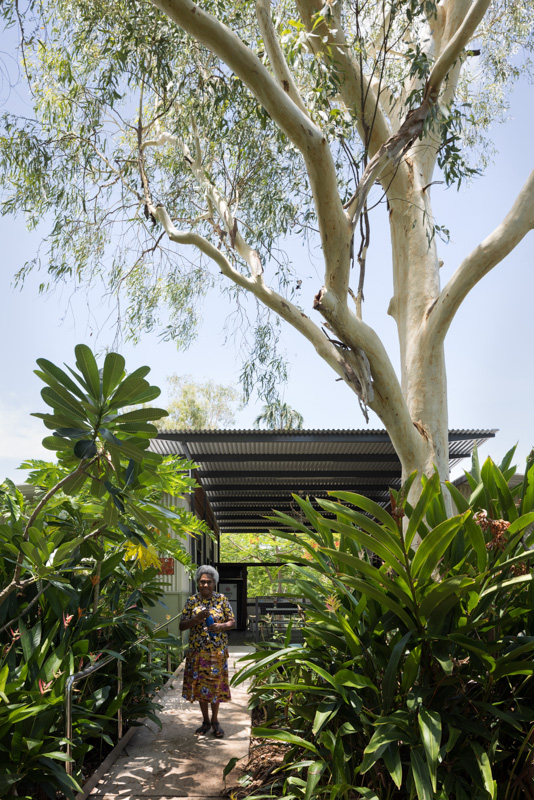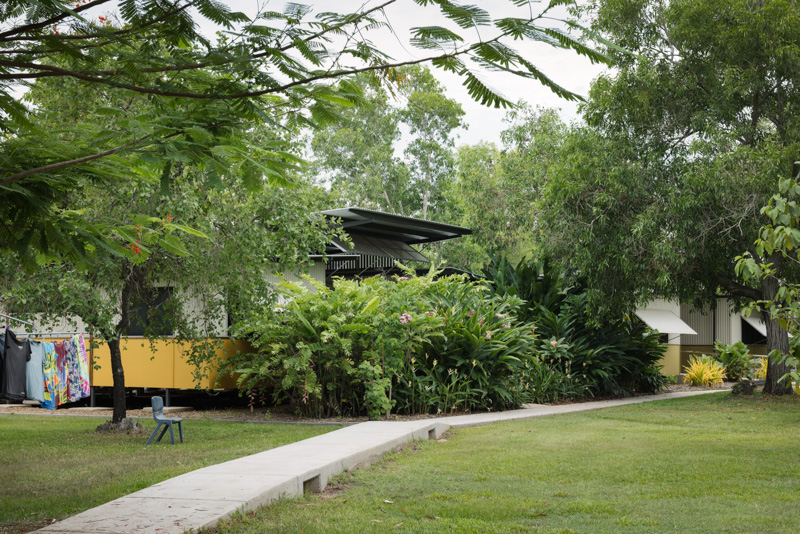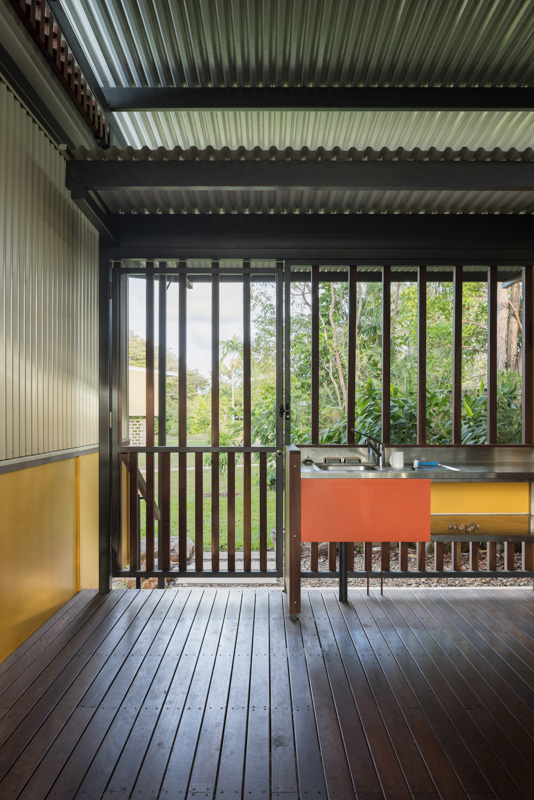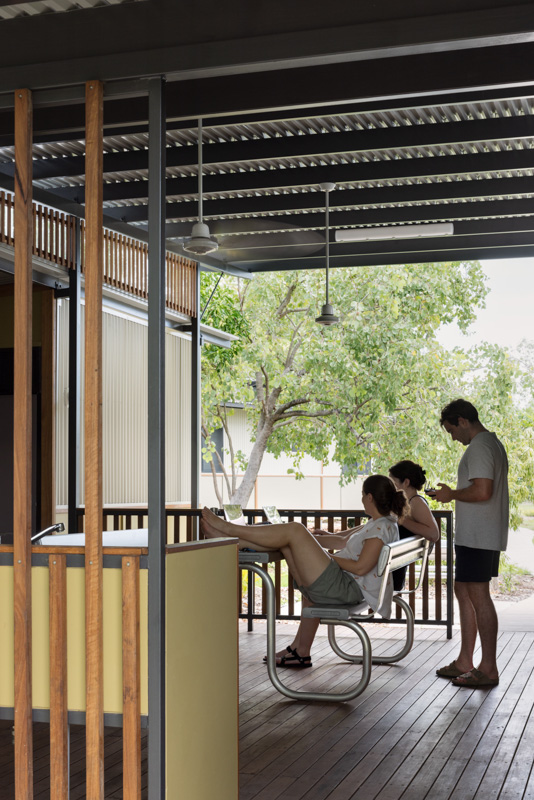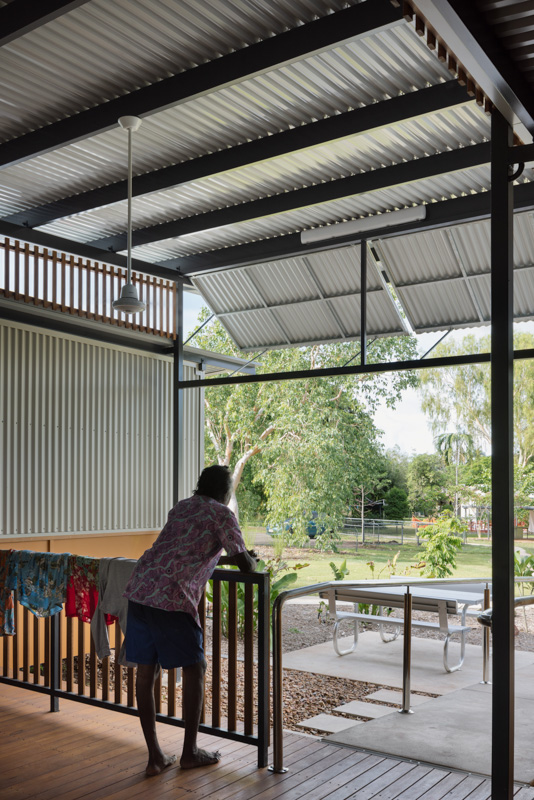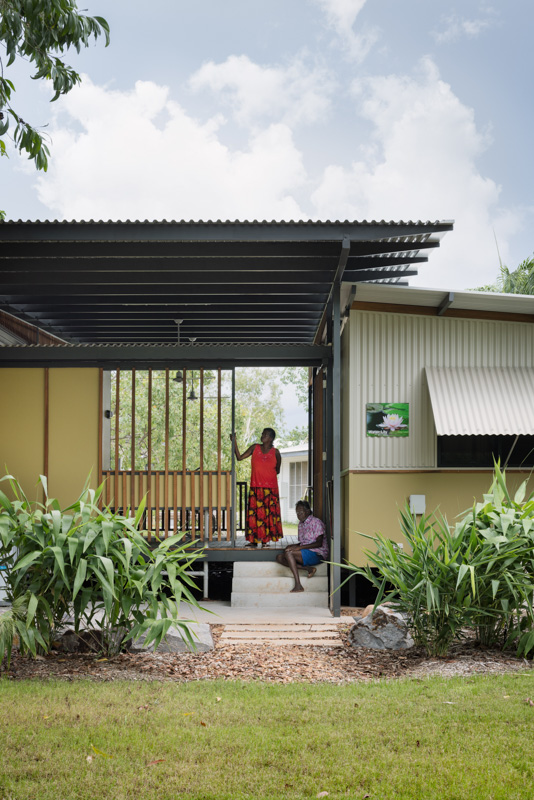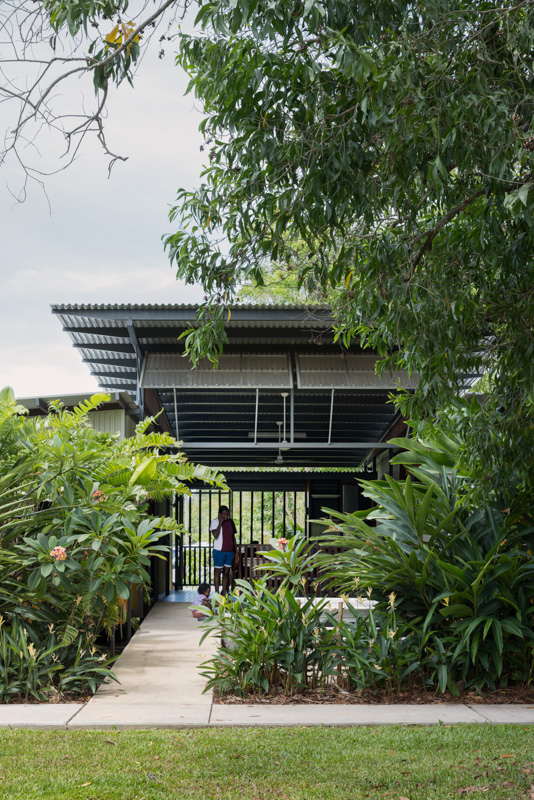Nungalinya | Incidental Architecture

2024 National Architecture Awards Program
Nungalinya | Incidental Architecture
Traditional Land Owners
Larrakia
Year
Chapter
Northern Territory
Category
Builder
Photographer
Media summary
The Nungalinya project involved the staged replacement of five free standing 8-10 bed student accommodation ‘units’ over a period of five years.
The core idea of the project was to improve the capacity and appeal of the college by expanding its accommodation capacity in a climatically, culturally and economically responsible way .
Each unit sits on the site of a pre-exsiting 40 year old 2 bed unit and connects to existing services.
The new units allow for double the student capacity, with improved privacy, amenity thermal performance and site planning.
Climate was a very big consideration. Accessibility and cultural sensitivity were also key drivers.
Nungalinya operates on a very low level of funding, and therefore required these units to be built economically.
Fundamentally, success is determined from a student perspective. The new units are very popular and have had almost universal acceptance from students and staff.
2024 National Awards Received
2024
Northern Territory Architecture Awards Accolades
Indigenous Community Architecture Award (NT)
The Ken Frey Award for Residential Architecture – Multiple Housing (NT)
The Tracey Memorial Award (NT)
Northern Territory Jury Citation
The Ken Frey Award for Residential Architecture – Multiple Housing
Nestled within the park-like campus of Nungalinya, this collection of five sequentially built accommodation suites exemplifies culturally sensitive, community-focused housing design for Indigenous students, fostering a supportive and restorative environment.
The architecture respects its natural surroundings, using local materials and sustainable practices to minimise environmental impact. The symmetrical and easily legible arrangement of four sleeping quarters and wet area amenities around an external communal heart encourages interaction and cultural exchange while allowing varying levels of privacy and retreat.
The layout and siting of the units are tailored to the tropical climate, featuring wide eaves, flying roofs, and robust, low-maintenance materials. This practical and appropriate approach has delivered an elegant and economical accommodation solution despite very low levels of funding.
A key factor in the project’s success was the architects’ consultation process. Their genuine and sustained engagement with the college leadership and community established mutual and enduring trust. This resulted in a design that addresses complex community dynamics and interpersonal needs. Furthermore, the programming response between first accommodation suite and those that followed reinforce the effectiveness of their initial interpretation and the feedback loop they created to inform minor tuning to subsequent buildings.
The Nungalinya project demonstrates the power of architecture in enhancing educational experiences and supporting social equity. Incidental Architecture has made a significant contribution to the wellbeing and success of the college’s students by creating a safe and welcoming housing solution.
Award for Sustainable Architecture
Nungalinya by Incidental Architecture exemplifies sustainability through thoughtful design, cultural understanding, and environmental accountability. The project’s five accommodation suites blend harmoniously with the natural landscape, minimising ecological disruption, reducing the carbon footprint, and promoting long-term environmental stewardship and resilience in the face of climate challenges.
Sustainable materials and energy-efficient systems are seamlessly integrated, incorporating passive cooling strategies, solar power, and water-efficient systems to minimize environmental impact. Additionally, the buildings not only meet the immediate needs of the college but also ensure low-cost ongoing operations, setting a wonderful precedent for future developments.
By prioritising sustainability in all its forms, Incidental Architecture has enhanced the college’s ability to educate and empower students, extending the impact of these buildings to the many communities that the college’s students return to upon completing their studies.
The Jury commends Incidental Architecture for their significant contribution to the wellbeing and success of the college’s Indigenous students through responsible design.
Tracy Memorial Award
Nungalinya by Incidental Architecture showcases excellence in design, sustainability, and cultural respect, making it the standout project in this year’s program, and in the opinion of the Jury, an exemplar demonstrator of the value architecture can provide.
While these buildings are modest in scale, sitting quietly in the landscape, the magnitude of their impact and reach cannot be overstated. In delivering these five accommodation suites, Incidental Architecture has crafted not only a beautiful and environmentally sensitive series of spaces where the architecture is secondary to satisfying the briefed need, they have also profoundly increased the capacity of the college to fulfill its aim in growing the skills and knowledge of its students.
At the heart of Incidental Architecture’s practice lies the belief that buildings are most meaningful when they serve the lives of the people and communities they inhabit. The Jury lauds the architects not only for their values but also for their unwavering dedication to upholding them in this project. As a result, the Jury proudly presents Nungalinya with the Tracy Memorial Award, recognising the substantial impact of their high-quality work and sustained generosity on the college, its students, and their communities.
Indigenous Community Architecture Award
Nungalinya College has a profound impact on Aboriginal communities by providing culturally relevant education and training. The progressive addition of new accommodation on campus, designed by Incidental Architecture, has significantly enhanced this impact.
These thoughtfully designed short to medium-term living quarters provide a comfortable and supportive environment for students who travel from remote communities to attend the college. The accommodation is more than just a place to stay; it offers a culturally sensitive space where students can feel at home, maintain connections with their heritage, and engage more fully in their studies. It was evident to the Jury that the success of this project is a direct product of the architects’ respectful and patient engagement process; something for which they are commended.
By addressing the practical need for housing, the new accommodation reduces barriers to education, allowing more students to participate in and benefit from the college’s programs. It also supports a communal living experience that strengthens peer relationships and community ties.
As a result, the new accommodation not only improves the daily lives of students but also reinforces Nungalinya College’s role in advancing the social and economic wellbeing of Aboriginal communities. It ensures that the college can continue to provide transformative education and training while respecting and celebrating Indigenous cultures.
The project with Incidental Architecture has been excellent from the outset. The new residential units are designed with the tropical, seasonal shifts in mind and incorporate Indigenous staff and student feedback in their design and further iterations.
Together they have significantly beautified the entire accommodation centre of the College, resonating with student’s expressed desire to be at the College to learn, but also to recuperate and rest. Dealings with the team have been respectful, clear and patient and we hugely appreciate just how much pro bono work has been gifted to the College. In short, we feel quite blessed.
Client perspective
